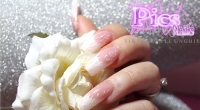
As we know, they are tools used daily from who works in the Nails sector, it is thereby fundamental discovering which are their characteristics and how they work, to be able to choose the most suitable for our needs!
First, it is important to do a little but important clarification: it is not right talking about Uv and Led Lamp...because actually both of them emit UV Rays! Exactly: both the Lamps emit Uv Rays, and without them the photo-curing Products (such as Gel Nails, Gel Nail Polishes) would not Catalyse!
As already explained here in our Blog, the photo-curing word means that we are dealing with Products which solidify only through the Light and specifically the Light of the Ultra Violet Rays, UV indeed! Not all the Light Emit Ultra Violet Radiation but our Nail Lamps YES, exactly to allow the Transformation of the Gelatinous State to the Solid one. To be more precise, the Rays we are interested in are the UVA.
To answer in a precise and detailed way to all of you and to scientifically deepen this important Topic, our Nail Master Giovanna Mary Fadda carried an accurate Research out, using the valuable help of her friend Matteo Montemaggi, Graduate in Astronomy, as well as President of the "Associazione Astronomica del Rubicone" and teacher of Maths and Science at Secondary School “W.Spallanzani” of the Foundation "Karis Foundation" of Rimini.

WHAT ARE UV RAYS?
The Electromagnetic Radiation is a form of transmission of Energy in the form of Waves, Electromagnetic Waves, in turn, characterised by a wave length and a frequency. The most known, in addition to the "optical" waves that allow us to see with our eyes, are maybe the Radio Waves or the Microwaves...
The tool for the classification of the electromagnetic ways, from the lowest frequencies up to the highest, is the electromagnetic spectrum (EM), a subdivision purely conventional and approximate in several intervals.

The Ultra Violet Rays in an Electromagnetic Spectrum are a particular interval of the Electromagnetic Radiation (as shown in the photo here next to) that are divided into UVA-UVB-UVC.
UV-A (400-315 nm), UV-B (315-280 nm) e UV-C (280-100 nm).
The Uv Rays are produced by a wide range o artificial and natural sources, including the Sun! Sun, in fact, emits both UV-A Rays than UV-B and UV-C Rays but, thanks to the action of absorption carried out by our ozonosphere, the 99% of the Uv Rays that reach us of the earth surface are UV-A Rays!
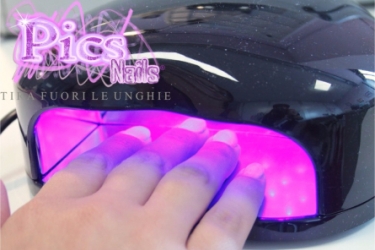
HOW TO CHOOSE THE LAMP?
Once clarified the disposition of the Uv Rays, the Main Question still has to be clarified…That is: How can we direct in the choice of the right Lamp for our professional needs?
There is much choice in trade...just as much confusion!
So the choice of the Lamp to buy can't be built on just an aspect, but it has to take account of different assessments! Let's see them together!
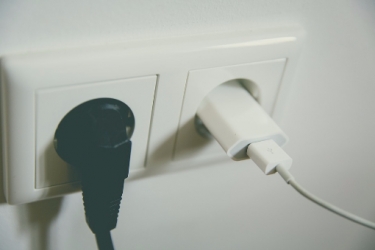
The Power:
We immediately precise that, in physics, Power is defined as the energy transferred in the time unit, in an appliance (and in our case the Lamp) is the absorbed and necessary energy to carry out its function. The Watt is the unit of measure of the International System of Power.
Talking about Power, we refer to the addition of several elements which determine the performances of the Lamp, so Classifying or Choosing the Lamp only according to the Watts is not always a certainty for its real functional capability!
So we can say that the Watts of a Lamp is an indicative value by which greater Power means a more Functioning Machine.
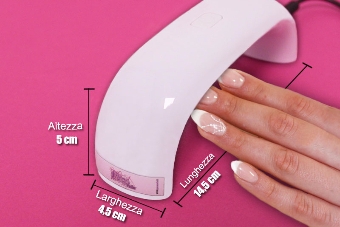
Sizes and Aestethic:
Certainly, also the Aesthetic Aspect will influence our choice: all the experts know how much space they have on their workstation and so they will be able to judge the suitable Lamp according to this factor!
Generally, the LED Lamps present on trade are lighter and more practical unlike compared to the "traditional" UV Lamps that still have less reduced and, perhaps, very classic sizes.
We well know how much, at our Nail Salons, it is important also this aspect: everything has to be always in order and each element has to be treated in detail...also the choice of the most suitable Lamp for our spaces is then a fundamental element to transmit our Customers a feeling of comfort and especially professionalism!
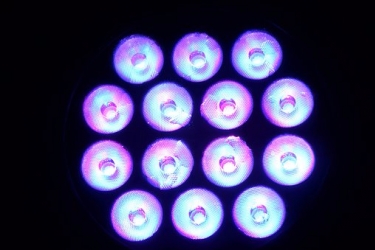
Life Duration and Maintenance:
Here is a further element to take account of to make our choice!
Unlike the UV Lamp, the Led ones do not need the periodical replacement of the Bulbs, becauuse they have a very long Duration and the Diodes used are unbreakable, realised in resistant plastic material and tested to resist to high temperatures.
The LED Lamps, moreover, do not contain toxic substances and they can be recycled with ease and used in complete safety!
Economic Aspect:
Certainly also the economic aspect, i.e the Price of the Lamps in trade, can only affect our decisions!
Until recently, Led Lamps were certainly more expensive compared to the classic UV Lamps...today the prices are equalizing, also thanks to the numerous models and products available on trade. By the way, when we talk about price, we have to take account that the long life of the Led Lamps justifies any price differences compared to the Uv ones.
But let's see Together how this two types of Lamps work!

HOW TRADITIONAL LAMPS WITH UV BULBS WORK?
The bulbs used in the Traditional Lamps are "Fluorescent Tubes" that contain gas (Mercury, Neon, etc.) not always banal for the health and not friends of the environment!
The Lamps, in fact, can't be easily assimilated, because they break in pieces, making their recover difficult.
Bulbs generate a bit of heat, reaching high temperatures (from 50° up): that's why when we enter the hand inside the Lamp, after a few minutes, we could burn!
The life duration of bulbs, moreover, is considerably limited to about 1000 working hours.

These Special Bulbs emit a wide Spectrum of Ultra Violet Rays with a wavelength from 340 to 315 nm (Uva) and they are indispensable to activate the Chemical Reaction that happens inside our Photo-Curing Products.
The Uv Ray penetrate inside the Product and meets minuscule parcels called Photoinitiators which trigger the Chemical Reaction making literally go atoms and molecules (present in Formula) crazy . These molecules start to quickly turn and tying between them in small very resistant chains, the Oligomers.
But all these movements create hit, similar to the rubbing of two objects, perceptible on the nail with different intensities. Shortly thereafter, the Reaction Finishes transforming our Gelatinous compound in a Solid and Resistant Structure!
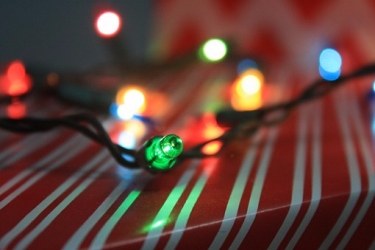
HOW LED LAMPS WORK?
We immediately precise that the term LED is the acronym of “LIGHT EMITTING DIODE”: Light is generated then by an electronic effect created by a small semiconductor element, precisely the Diode, that, according to the material used, emits light even in different colors!
The first LED was developed in 1962 from a consultant for the General Electric, Nick Holonyak Jr.
The LED Technology represents the evolution of the lightning under different points of view!
The Life Duration of the Led Lamps is estimated at about 20,000/50,000 hours (it depends on the models of the Diodes) and also at the end of the life they keep in any case the 70% of the Starting Light Emission!
They do not have harmful substances and they don't create heat, because they produce cold light.
They ensure a considerable Energetic Save: the ratio between the light efficiency of the Led and the lm/w consumption is about 3:1 and in some cases also 5:1 or 7:1

It means that a Standard House Lamp of 100 watts is comparable to a Led Lamp of 20 watts…Equal Light but with a Considerable Energetic Save!
Everything is proven by the Uv-Led Lamps that have low usages (3/6/9 watts) but they emit the Same Light Energy of the Traditional Lamps with Uv Bulbs (9/18/36 watts).

The real differences reside in the Wave Length of the Uv Rays Emitted and in its Intensity: The new UV LED Lamps in fact emit with greater intensity only a wave length of UVA rays, the most important for th Catalysis of our Nail Supplies, unlike - as we already said - the traditional UV Bulbs that emit a wider spectrum of radiations!
The intensity is measured by the width of the Wave quadratic: a greater intensity determines a greater brilliance of the Radiation.
It is important specifying that the Photoinitiators present in the different Gel or Gel Nail Polish formulations on Trade can be of many types and they React with Different Wavelength: for this reason some Gel Nails or Gel Nail Polishes do not become solid inside certain Nail Lamps.
Our advice, then, is to always be sure – before purchasing a Nail Lamp or a Gel Nail Supply - that they are Compatible!
We arrived at the end of this long and interesting in-depth-analysis dedicated to the Uv and Led Lamps. This time, as you certainly noticed, we wanted to dedicate some extra line than usual to this topic because we think that it is a very important topic for who works for years in this fascinating sector, as well as for who approaches to this world for the first time and desires to offer an always professional and attentive service to the different needs of the trade!
Once again, then, our fundamental Advice is always the same: always inform about what you purchase or use, discover and learn the characteristics of each Product and Working Tool and their modes of use...because only in this way it is possible guaranteeing always the maximum professionalism and safety to your customers! Good Work!










